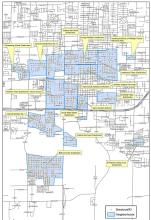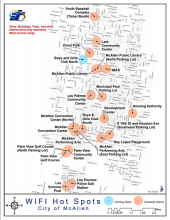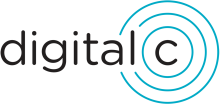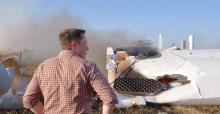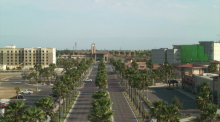
Over the last few months, a number of cities across the country have recognized the pressing need to find a way to get those in their community without Internet access connected. In San Rafael, California, San Antonio, Texas, and Champaign, Illinois, local governments along with a variety of philanthropic, technical, and private partners have developed a host of innovative ways to bring fixed wireless solutions to neighborhoods in need.
The city of McAllen (pop. 140,000) — near the mouth of the Rio Grande, at the southern tip of Texas — offers some additional lessons to be learned and a blueprint for success for other local governments thinking of doing the same. Quietly over the summer, it collected broadband data, designed, and deployed a fixed wireless network which to date covers more than three dozen neighborhoods and provides free connectivity for the city’s students and residents.
Fiber From the Water Tower
Citywide Wi-Fi has been a long time coming in McAllen. Mayor Jim Dalson and the IT Department have wanted to do it for years, IT Director Robert Acosta said in an interview, but finding a way to pay for it has been the major barrier. In the meantime, his department has been adding wireless coverage to public spaces for the past half decade, at city parks, outside of government facilities, at the Museum of Art and Science, and at the Boys and Girls club. He also extended the network to traffic cameras, water towers, and other government facilities, and when the pandemic hit his department had more than 60 miles of fiber to call upon.

The current effort started in the middle of June, when the city commission and mayor allocated $2.9 million from county-distributed CARES money to the IT Department in order to get students connected for the upcoming school year (see map, right). Almost three-quarters of the 23,000 students in the school district are economically disadvantaged, and many had no Internet access at all. But while the effort started as a solution for students, shortly after it began project officials decided to open up the network to the public so that everyone could benefit.
With Acosta’s department leading the way and wireless consulting outfit Frontera providing design work, installations quickly got underway. The city’s fiber infrastructure was extended, where needed, to water towers, upon which were placed Cambium base stations to turn the fiber connections into a wireless one. Those were paired with Cambium 450 access points installed on American Electric Power (AEP) light poles (which are leased and which provide power) all around the city, with IT department crews (and ultimately Frontera) pitching in throughout the summer to hit 40-60 poles each day. Each node can service a 600-foot radius and two dozen homes. The first sections of the network went live in the middle of August.
Free, Public Wi-Fi
The city IT department owns the infrastructure and acts as network operator. Connections flow back to city hall and to a secondary datacenter, where a firewall and other software keep the public Wi-Fi network separate from the city’s intranet. Some sites are blocked for security purposes, and the network limits device connections to 15 Megabit per second (Mbps) download speeds to maintain usability while allowing as many people to connected as possible.
Early tests, according to Acosta, are promising, with users getting 15/7Mbps connections. And people are enthusiastically using it. In its first week, 2000 residents connected. Two weeks later that number quadrupled, but so far, according to reports, traffic has been within expected limits. The city has a 5Gbps connection it can use, and the network was designed to handle up to 15,000 concurrent connections. Robert Acosta said in an interview:
It’s been so rewarding. We’re out there installing Wi-Fi and people come out of their home and they’re thanking us and bringing us cookies. It’s a great feeling to see how we’re impacting our community.
Mayor Jim Darling said of the effort:
When you look at COVID-19 and the fact that we’re 100% remote, it’s 100% important because without kids being connected it’s impossible for us to provide the education that we need to. As a one-to-one district where all of our elementary students have iPads and our secondary students have Chromebooks, this connectivity part of it is the last piece of the puzzle.
Challenges
Undertaking the effort has not been without its challenges. The city commission originally gave the IT Department just 45 days from design to completion in order to comply with the reimbursement schedule for the CARES Act funding handed out by Congress last March. Midway through the effort, however, the county extended McAllen’s deadline to the end of September.
Finding the staffing to make it work, Acosta related, was another consideration, but inter-departmental cooperation saw the city’s traffic division, park division, and staff from the convention center all pitch in bucket trucks and operators. Frontera likewise joined the effort. To date, more than 720 access points have been installed.
Another unexpected obstacle was finding enough light poles to mount hardware to. With crews originally setting up on non-primary wood light poles, at 680 they suddenly ran out. The IT Department went back to the drawing board and after negotiations, began installing on AEP- and Magic Valley Electric Cooperative-owned concrete poles which are scattered throughout the older subdivisions in the city. The last 25% of the access points will be mounted there.
While project designers determined early on that paying for the software to limit the network to student users only was both financially unworkable and, ultimately, not in line with its end goals, the city did spend the money to license 2.4Ghz and 5Ghz spectrum to reduce interference, improve network performance, and ensure its longevity.
Unexpected Successes

Acosta attributes some of the effort’s success to working with the school district in the mapping phase of the project. With no broadband data available to them, the department initially started by collating decade-old census data to determine median households incomes as an indicator for targeting the neighborhoods that needed it most. But the district helped to take that information and overlay it with its own data, which helped Acosta’s staff figure out how many students were in those neighborhoods and which ones didn’t have any Internet access.
Another unexpected success came in deploying the access points themselves. While the department and the city commission originally expected the first 1,000 access points to cover just 16 of the city’s neighborhoods, the team ended up being able to stretch the network without any trouble to more than 40 (see map, left). This meant more people able to connect, but brought on an additional problem: finding trained employees to staff a technical assistance call center without additional hiring which would have pushed the project over budget. As it stands, the city’s 311 line serves as the first line of support, with calls routed to the IT Department to solve stickier problems. Right now they remain limited to regular business hours, which Acosta knows will be a problem to solve as residents look for help at night and on the weekends.
Looking Ahead
Managing city leadership expectations while keeping the network free and operational moving into the future has been a high priority for the McAllen project, Acosta related. Early on he put in the work to develop a five-year total cost of ownership that included not only initial capital outlay, but maintenance, the cost of leasing the light poles from AEP and Magic Valley, electric usage, resources for the call center, and a depreciation fund to address hardware refreshes down the road. Access points and base stations were installed with consideration of the region’s vulnerability to hurricanes, heat, and UV exposure (its components are housed in plastic) so the city has made the network a part of its ongoing budget beginning next year.
Though initial plan for the project accounted for 1,000 access nodes scattered throughout the city, future plans, depending on funding, could see more added.
McAllen, Acosta said, has already been helping communities in the area who have come for advice and are looking to replicate the city's success.
Header image by Valleyite12 from Wikimedia Commons licensed under the Creative Commons Attribution-Share Alike 4.0 International license.
Map of the 16 original neighborhoods from City of McAllen Facebook
Map 2 showing current availability from McAllen city website.
